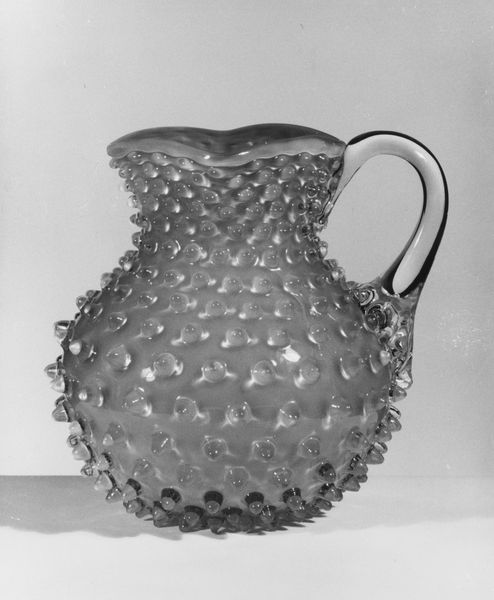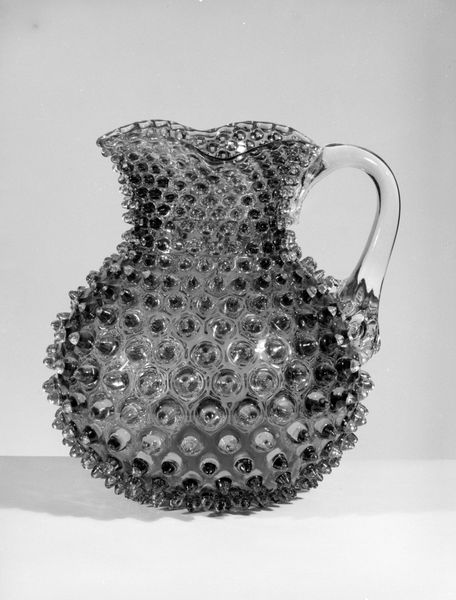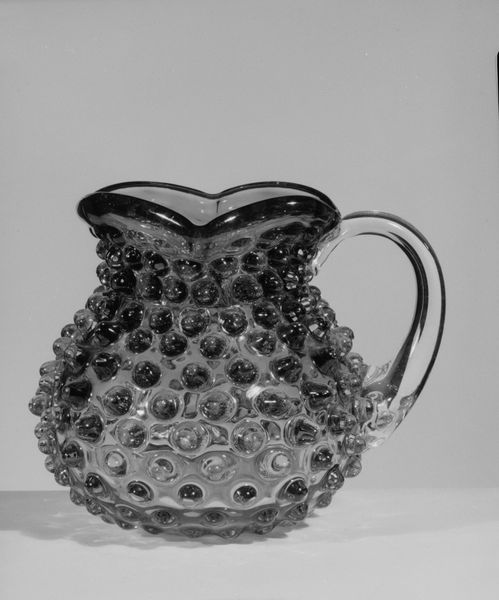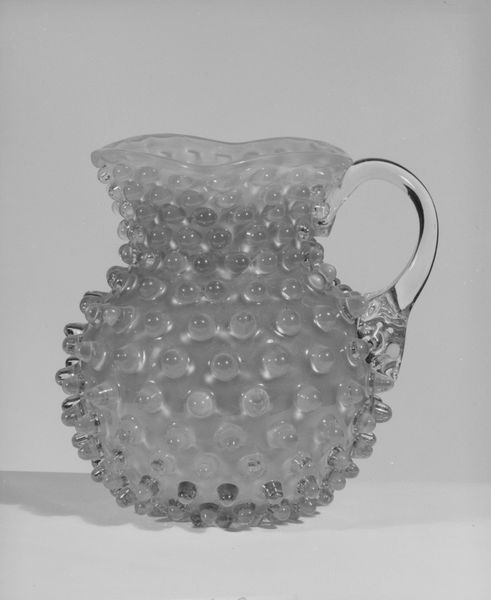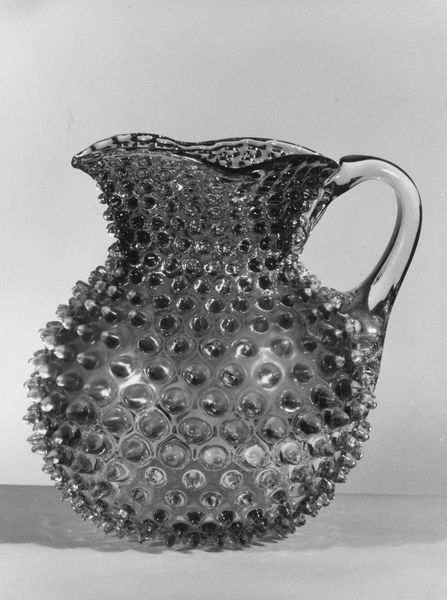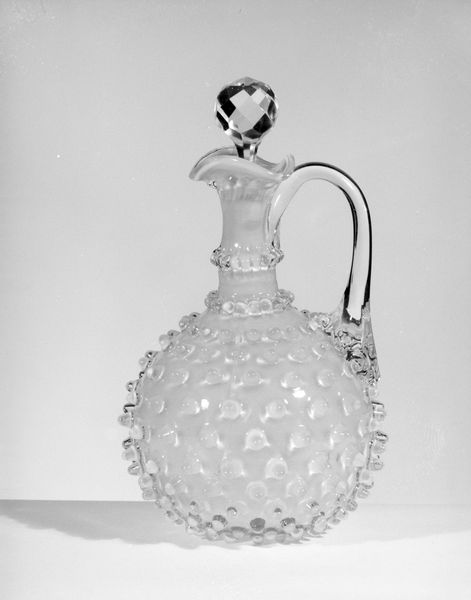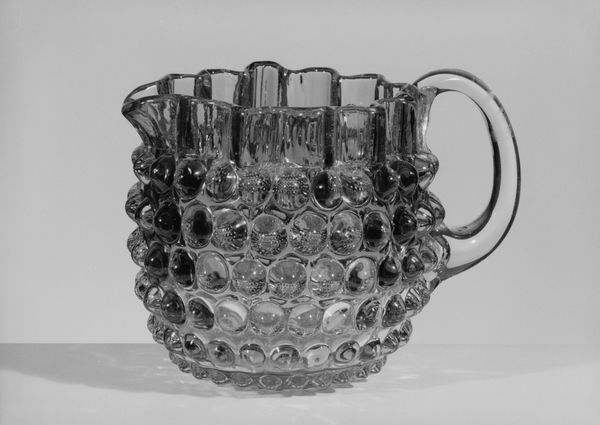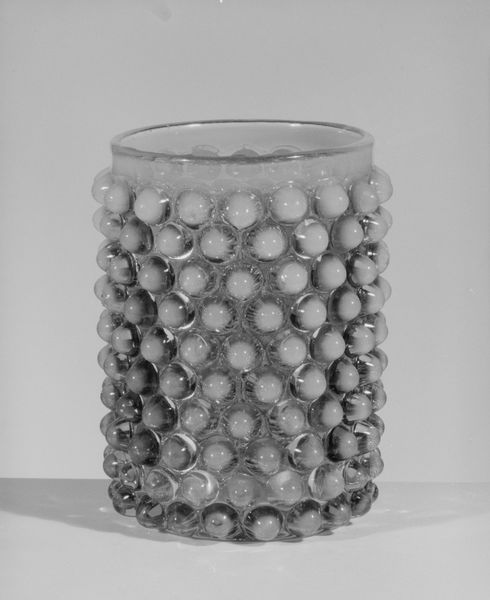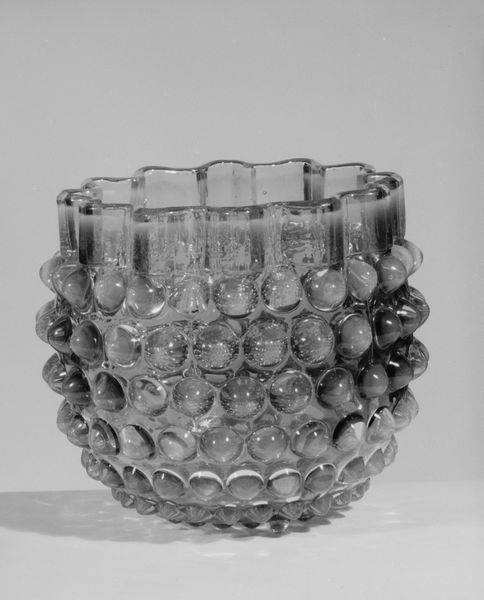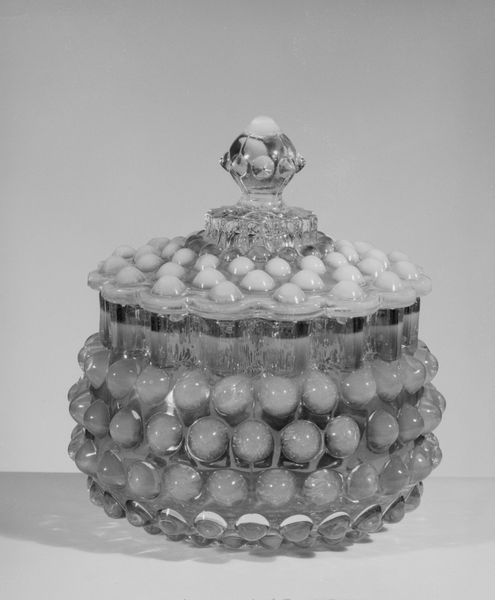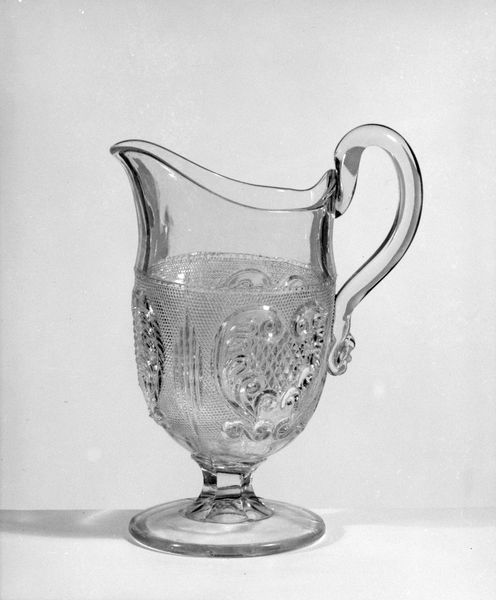
glass, sculpture
#
glass
#
sculpture
#
decorative-art
Dimensions: H. 5 1/2 in. (14 cm)
Copyright: Public Domain
Editor: Here we have a glass pitcher, or what’s left of it, from the late 19th century made by Hobbs, Brockunier and Company. The ‘hobnail’ design, those little raised dots, makes it seem tactile, almost like a sea anemone. How do you interpret the formal qualities of this work? Curator: Its structure is primarily defined by the tension between smoothness and texture. The regularity of the hobnail pattern, meticulously spaced across the surface, contrasts with the fluid form of the pitcher itself and the elegantly shaped rim. Note how the handle, seemingly an afterthought, interrupts the overall unity of the design. Editor: That’s an interesting point. The handle does seem separate. Is there anything else that stands out regarding its formal arrangement? Curator: Consider the glass itself. Its opacity disrupts the functionality of a pitcher; this is decorative. The reflected light emphasizes the dimensionality of each hobnail, creating an intricate play of light and shadow. Its semiotic purpose resides primarily within the formal language it uses. Editor: So, it's less about utility and more about the visual and tactile experience? Curator: Precisely. The repeated pattern transcends mere ornamentation; it's integral to the sculpture's aesthetic statement. The structural integrity is, one might argue, subservient to the decorative effect. Editor: This was really insightful! I learned to look beyond just what the object is and see how it functions as a visual design. Curator: Indeed, it's through close visual analysis we begin to understand the complexities within the ostensibly simple. I also feel that I can observe more subtleties in the manipulation of glass with you!
Comments
No comments
Be the first to comment and join the conversation on the ultimate creative platform.
